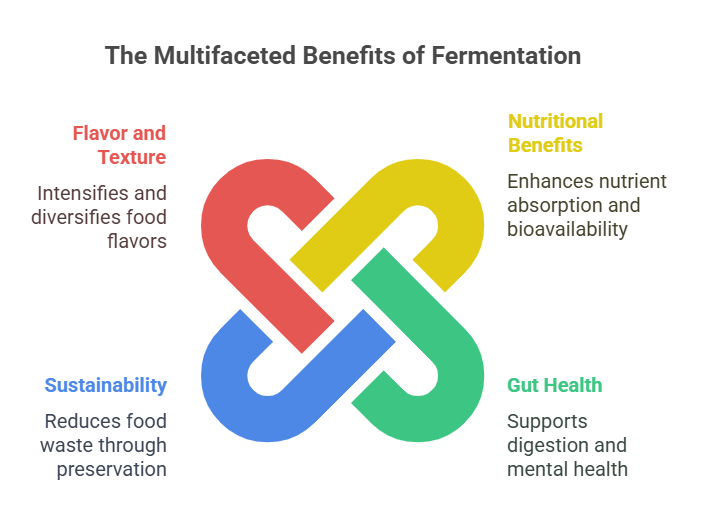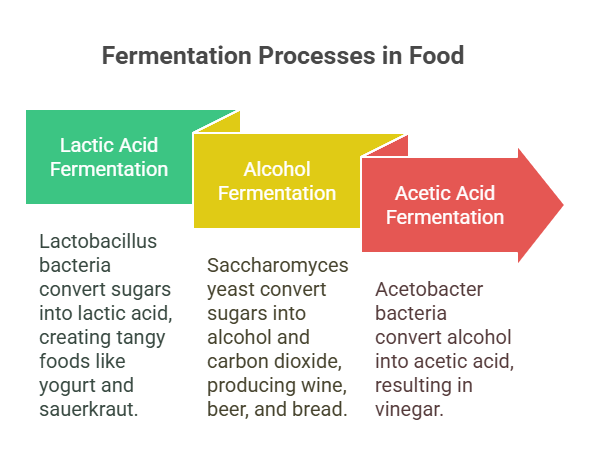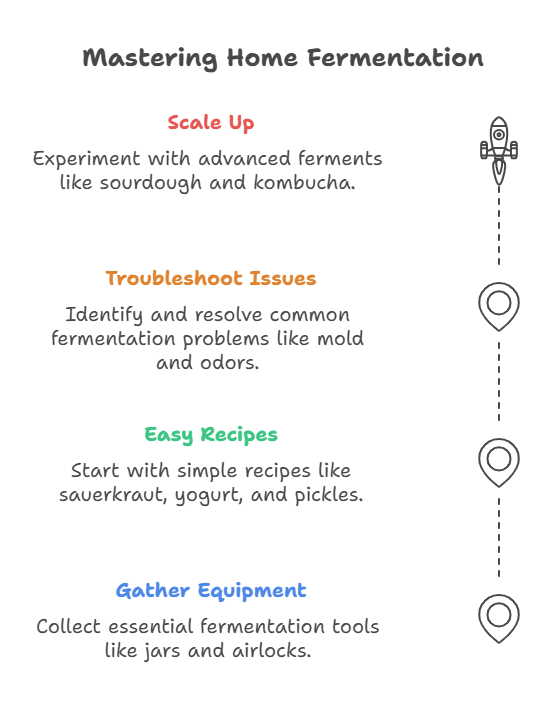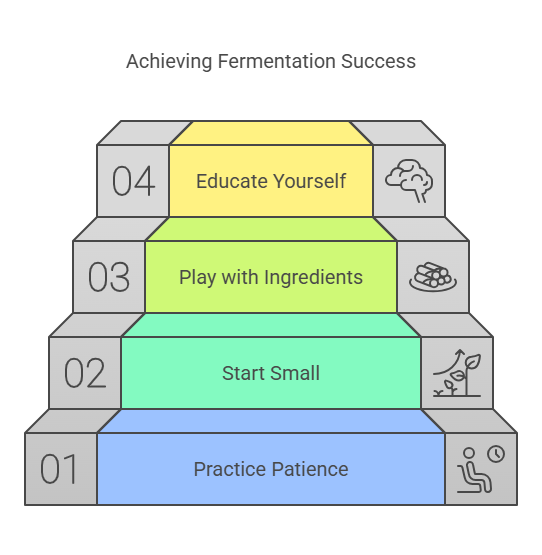Fermentation. It’s the word that seems to be on every chef’s lips, in every food blog post, and popping up on supermarket shelves as kombucha, kimchi, or sourdough starters. But this isn’t a fleeting food trend—fermentation has been quietly at work for thousands of years, transforming our food and enriching our meals. If you’ve been curious about fermentation and wondered how to get started, buckle up. This guide will take you through the art, science, and joys of fermenting, from ancient history to modern-day gastronomy.
What is Fermenting?
At its core, fermentation is magic backed by science. It’s a natural process where microbes—like yeast, bacteria, or mold—convert sugars into other compounds, such as alcohol, acids, and gases. This biological alchemy gives us beer, bread, yogurt, pickles, wine, and sauerkraut.
But fermentation isn’t just about food transformation; it’s a cooking method, preservation technique, and a bridge between art and science. Traditionally, fermentation was used as a way to preserve food in the absence of refrigeration. Today, it’s celebrated not just for its practicality but for the rich flavors and unique textures it adds to dishes.
Whether you’re a beginner or an experienced cook, fermentation invites you to harness these processes and become both a scientist and artist in your kitchen.
A Brief History of Fermenting
Fermentation is one of the oldest methods of food preparation—older than written language! Around 7000 BC, people were brewing beer in ancient Mesopotamia. Ancient Egypt had wine and leavened bread. Across East Asia, regions like China and Korea perfected the art of fermenting soy, seafood, and vegetables to preserve and season their food.
What makes this history so fascinating is how fermentation evolved from a necessity to a tradition and, now, to culinary art. Take Japanese miso, French wine, and German sauerkraut—all staples born out of necessity but celebrated worldwide as cultural icons.
Today, through globalization, these fermented foods have leapt across borders, becoming staples in countless cuisines.
The Benefits of Fermentation
If you thought fermentation was just about flavor, think again—it’s a powerhouse of benefits that extend beyond taste.
1. Nutritional Benefits
Fermented foods often pack more punch nutritionally than their fresh counterparts. Why? Fermentation breaks down compounds into more digestible forms, allowing the body to absorb nutrients better. For example, sauerkraut is rich in Vitamin C, and kefir is an excellent source of probiotics.
2. Gut Health and Beyond
You’ve probably heard of probiotics—those “good bacteria” that support digestion and boost immunity. Fermented foods are brimming with them. Studies even suggest that the gut-brain connection might mean improvements in mental health, with probiotics helping reduce anxiety and depression.
3. Sustainability
One of fermentation’s underrated benefits is its environmental impact. Fermentation prevents food waste. Got cucumbers about to go bad? Turn them into pickles. A surplus of fresh milk? Transform it into yogurt!
4. Unmatched Flavor and Texture
Nothing enhances flavor and texture like fermentation. Imagine the sour tang of a good kimchi or the umami kick of miso—it’s flavor on a whole new level.

Popular Fermented Foods Around the World
Fermentation is a global phenomenon, with unique creations cropping up in nearly every cuisine.
- Asia: Kimchi (Korea), miso (Japan), fermented soy sauce.
- Europe: Sauerkraut (Germany), kefir (Eastern Europe), sourdough bread (France).
- Africa: Fermented cassava, injera (Ethiopia), or sour porridge.
- South America: Chicha (corn beer), tepache (fermented pineapple).
Even everyday items in your pantry—like chocolate, coffee, vinegar, and cheese—are byproducts of fermentation!
The Science Behind Fermenting
Understanding fermentation will make you a better fermenter. Here’s the simple breakdown of the types of fermentation at work in your kitchen.
1. Lactic Acid Fermentation
This is the process behind yogurt, sauerkraut, and kimchi. Lactobacillus bacteria convert sugars into lactic acid, providing that signature tangy flavor while preserving the food.
2. Alcohol Fermentation
Cheers to yeast! When Saccharomyces yeast converts sugar into alcohol and carbon dioxide, you get wine, beer, and bread (yes, bread is technically fermented too!).
3. Acetic Acid Fermentation
This type gives us vinegar. Acetobacter bacteria take alcohol and convert it into acetic acid for that sharp, pungent taste.
Proper hygiene and controlled conditions are vital during fermentation. Contamination can ruin your hard work—or worse, make you sick. Always clean your equipment and keep an eye on temperatures.

Step-by-Step Guide to Fermenting at Home
Feeling inspired? Good, because anyone can ferment! Here’s how to get started.
1. Gather Your Equipment
You’ll need basic tools such as fermentation jars, weights, and starter cultures. Glass jars work best because they won’t react with the acids during fermentation. Airlocks can help release gases safely.
2. Start with Easy Recipes
If you’re a beginner, try these approachable fermentation recipes:
- Sauerkraut: Shred cabbage, mix with salt, and pack it tightly in a jar. Wait for 1–2 weeks, and voilà!
- Yogurt: Heat milk, cool it, and stir in a yogurt starter (or plain live-culture yogurt). Keep it warm and watch it thicken overnight.
- Simple Pickles: Combine cucumbers, brine, and spices in a jar. Within a week, you’ll have crunchy delights.
3. Troubleshoot Common Issues
- Mold: If you see fuzzy mold, discard it—don’t risk eating spoiled food.
- Strange Smells: A bit of funkiness is normal, but excessive rotten odors signal a problem.
- Slow Fermentation: This could mean low temperatures or not enough salt—it’s a delicate balance.
4. Scale Up Over Time
Once you’ve nailed the basics, experiment with ferments like sourdough bread, kombucha, or even miso.

Fermentation in Modern Cooking
Fermentation isn’t just for traditional food—modern chefs are pushing its boundaries in fine dining and specialty cooking methods.
High-end restaurants are using fermentation to create entirely new flavors. Think fermented honey in desserts or miso-based sauces replacing traditional fats. There’s even a movement toward fusion cuisine, where fermentation techniques are mixed with global ingredients.
Tips for Success in Fermenting
- Practice Patience: Good things take time. Fermentation is no exception.
- Start Small: Begin with one recipe at a time to understand the process.
- Play with Ingredients: Try fermenting different fruits, vegetables, or grains.
- Educate Yourself: Recommended reads include “The Art of Fermentation” by Sandor Katz.

Encouraging a Fermentation Journey
Fermenting is more than a cooking method; it’s a connection to cultural heritage, flavor, and sustainability. Start small, stay curious, and don’t forget to check back on our blog for essential cooking methods. Happy fermenting!
📌 Stay connected with us!
- Follow us on Instagram: @RoastedKitchen25 for daily cooking inspiration.
- Tag us in your creations using #RoastedKitchenfermenting—we’d love to see what you make!
- Subscribe to our newsletter for exclusive recipes, expert tips, and kitchen hacks straight to your inbox!
Frequently Asked Questions about Fermenting
Does fermenting save money?
Yes! Fermenting at home is significantly cheaper than buying store-bought options like kombucha or artisan kimchi. With just a few ingredients—like vegetables, salt, or milk—you can create nutritious and flavorful ferments that cost only a fraction of the price.
How long does fermentation take?
The time needed for fermentation varies by recipe and type of food. Quick ferments, like pickles, can be ready in a few days, whereas sourdough starter or miso can take weeks or even months. Patience is key to achieving the best results.
Are all fermented foods healthy?
Not all fermented foods are created equal. For example, pasteurized products often lose live probiotics during processing. To maximize health benefits, choose or make fermented foods rich in live cultures, like yogurt, kefir, or raw sauerkraut.
Can I experiment safely?
Absolutely! Fermentation is safe as long as you follow proper hygiene practices and stick to trusted recipes. Always use clean equipment, control temperatures, and watch for signs of spoilage like mold or foul odors.
What tools do I need to start fermenting?
You’ll need basics like glass jars, weights, and starter cultures (if required for specific ferments). Airlocks are also helpful for releasing gases during fermentation. Most items are inexpensive and easy to source.
How do I know if my ferment is safe to eat?
A successful ferment should smell tangy or slightly sour—not rotten. While it’s normal for ferments to bubble or fizz, throw out any batch with visible mold, slimy textures, or a strong off-putting smell.
Will fermenting fit into a busy lifestyle?
Yes! While fermentation takes time to develop, the active prep time is often minimal—usually involving just a few minutes to shred, mix, or jar your ingredients. The microbes do the rest of the work for you.
Can fermented foods improve my gut health?
Yes! Many fermented foods are packed with probiotics, which support digestion, boost immunity, and may even positively impact mental health through the gut-brain connection.
What’s the difference between fermented and pickled foods?
Fermented foods rely on natural microbes to develop flavors and preservation, while pickled foods are preserved with vinegar or brine and don’t always involve fermentation. Both can be delicious, but fermentation has the added benefit of probiotics.
Can I use fermentation to reduce food waste?
Definitely! Fermentation is a great way to preserve produce that might otherwise spoil. For example, cucumbers turn into pickles, and overripe fruit can be transformed into chutneys or fermented beverages like tepache.
How do I troubleshoot common fermentation issues?
If mold forms, discard the batch—it’s not safe to scrape it off. If your ferment isn’t bubbling or developing, check the temperature and salt levels, as both can impact the process. Don’t be afraid to start over and learn from the experience.
What’s the best way to get started with fermenting?
Begin with simple recipes like sauerkraut, yogurt, or pickles. These are beginner-friendly and require minimal equipment. From there, you can expand to more complex ferments like sourdough or kombucha.
Explore the wonders of fermentation, and remember to enjoy the process—it’s as much an art as it is a science!

Hi, I’m Mayaz Ahsan!
As a passionate cook, storyteller, and food enthusiast, I combine my love for travel, farming, reading, and teaching to bring you insightful culinary tips and stories. Welcome to Roasted Kitchen – I’m thrilled to share this journey with you!










 Subscribe to our free newsletter for tips, tutorials, and insights!
Subscribe to our free newsletter for tips, tutorials, and insights!